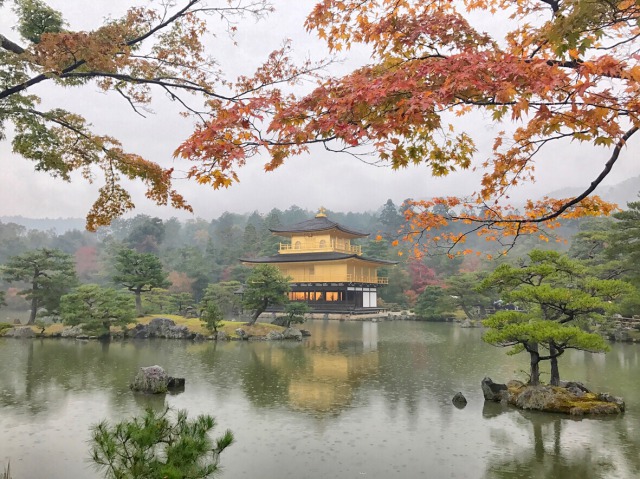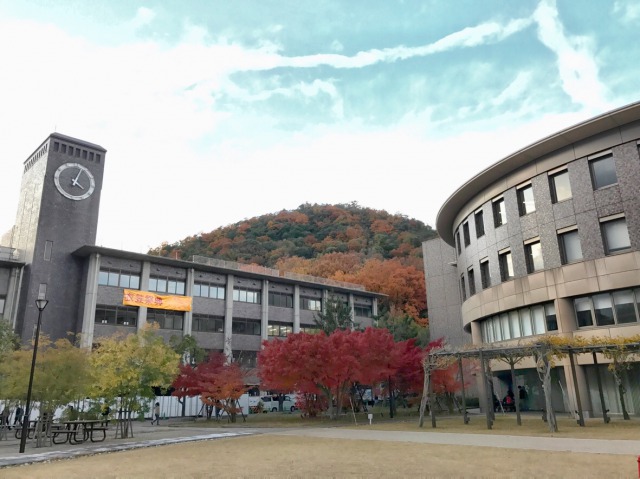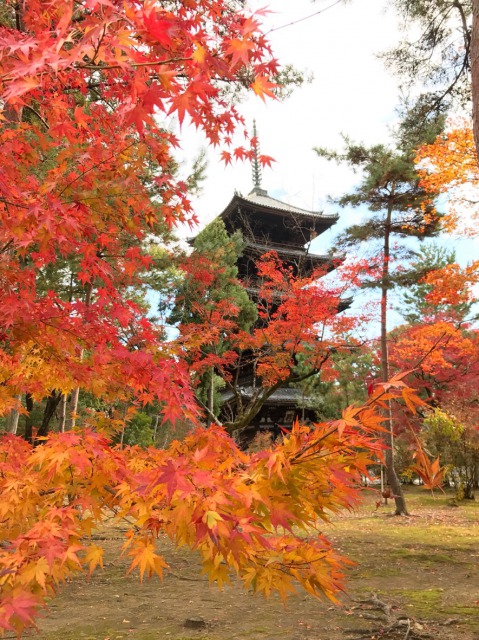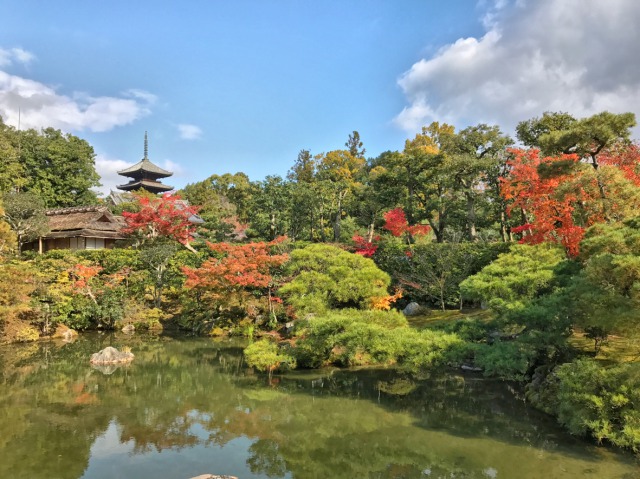Kyoto 1 day trip around Kinkakuji temple
Pagoda, stone garden and 88 temples in one day in Kyoto
One of the main attractions in Kyoto, the Kinkaku-ji or Golden Pavilion is only one minute by walk from Tea ceremony Koto. Before or after a tea experience you can explore this traditional area, walk around in Japanese gardens, visit temples and pilgrimage routes. Many travelers are just visiting Kinkakuji, but there are much more sweet spots around, therefore in this guide we are going to highlight some of them and giving you local tips.
Cultural treasure of Kyoto: Kinkaku-ji
The pagoda originally was a villa and was given to Ashikaga shogun about 600 years ago, later it became a zen temple. But how come it’s gold? Not many people knows that the ‘golden leaf’ covering Kinkaku-ji was created by a Kyoto based company, called Horikin, who are the masters of the Japanese art called ‘kinpaku’, which is decorating with gold. The artisans apply many extra thin golden leaves on the surface, so it is possible to cover many different objects and shapes with this technique. (Do you want to experience how to do kinpaku? You can reserve here >>>)
Kinkakuji is beautiful in every season, and our recommendation is to go early in the morning to avoid the crowd.
Tip from locals: usually people are focusing on the pagoda itself. But when you are there, pay attention to the pond also, because there are small islands, called crane and turtle, because of their shapes.
Location:
https://goo.gl/maps/a1xTqaAKsJH2
Open: 9:00-5:00pm
Meditating in a stone garden: Roan-ji temple
You can reach Roan-ji temple in twenty minutes by walk from Kinkaku-ji. Originally it served as a villa too, but nowadays it is the home of one of the most famous stone gardens in Japan, despite that the exact meaning of the garden is unknown. Usually stone gardens have some main motives like mountain or dragon shaped stones, but in Roan-ji there is no one main meaning, so we can use our imagination freely. The function of the garden is not just decoration, but originally it was constructed to reflect light into the building.
Tip from locals: sit down in front of the stone garden and take a break, let your mind explore the area and try to meditate.
Location:
https://goo.gl/maps/XL8C9L652qq
Open:
Mar – Nov 8:00-5:00p.m.
Dec – Feb 8:30-4:30p.m.
Immersing in local culture: Ritsumeikan university
Before heading to the next temple, our advice is to do a detour and visit Ritsumeikan University for lunch. Did you know that in Japan anybody can enter to the cafeteria of a university and enjoy the delicious and cheap food there? Healthy meal is really important in Japan, even in a university cafeteria you find plenty of choices. Besides that you can experience the local life and atmosphere.
Tip from locals: there is a chance that some event is happening at lunchtime. In good weather you can eat outside or find your place on the grass with a bento (lunch box) – you can buy it just at lunchtime.
Location:
https://goo.gl/maps/sus7xXxHE8L2
Closed on weekends
Stunning pagoda: Ninna-ji temple
Ninna-ji temple is about fifteen minutes by walk from Ritsumeikan university. Usually it is not so crowded, except in late April, because the famous late-blooming cherry trees called omuro zakura. Ninna-ji is very spacious, because originally it was the summer home of the imperial family. The summer in Kyoto is really hot and humid, therefore to move to a colder area near to the mountains was a logical choice. One of the most picturesque scene is the almost 400 years old, 5 storey pagoda. It is worth to be walked around.
Location:
https://goo.gl/maps/sus7xXxHE8L2
Open:
Mar – Nov 9:00-5:00pm
Dec – Feb 9:00-16:30pm
Up to the mountain: Mini pilgrimage route
One of the secrets of this area is the ‘Mini 88 temple pilgrimage walk’ or 88 Kasho. Surrounded by mountains and hills, Kyoto has many hiking options, but this one is really unique among them, because it is modeled after the most famous pilgrimage route in Japan.
The original route contains 88 temples in Shikoku. It is 1200 km long and takes about 3 months by walk. But here, just behind Ninna-ji, you can visit 88 mini temples along the road just in one hour!
The hike is easy, and it is a beautiful, calm area, can be a nice walk any time of the day – and on the top you can see the entire city. To start the walk, just walk through the rear exit of Ninna-ji temple and find the first temple.









